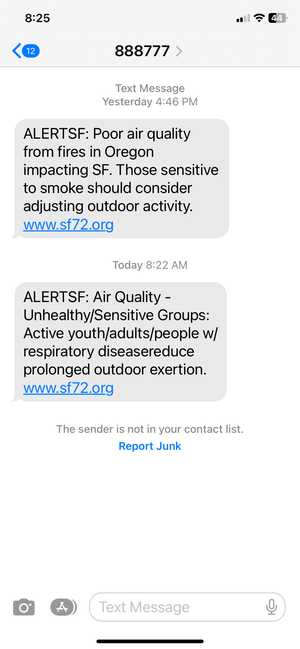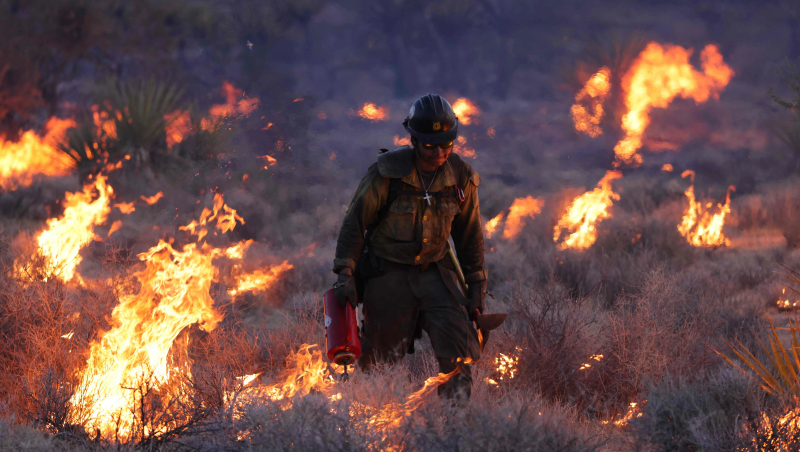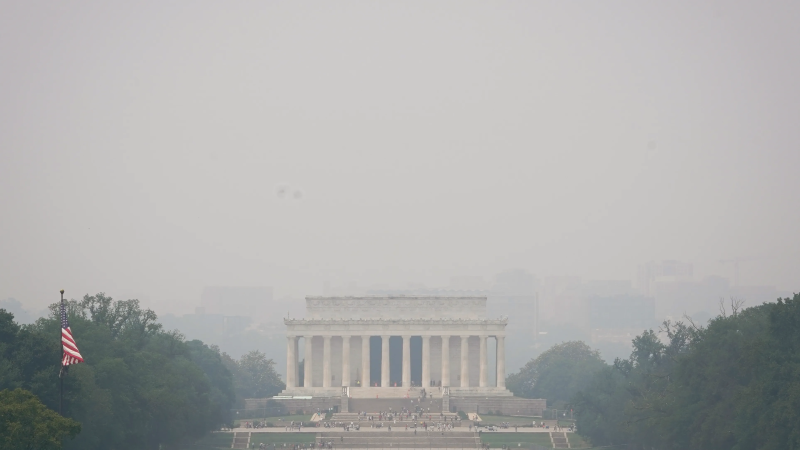Smoke, air quality alerts descend on San Francisco Bay Area. A study explains why.
Wildfire smoke descended on California's Bay Area this week, prompting Wednesday air quality alerts after a summer where smoke-filled, acrid-smelling skies brought dismal air quality to tens of millions of people across the country.
These smoky days aren't an anomaly, a new study released Wednesday suggests. In fact, the study says smoke from wildfires has worsened air quality in almost 75% of U.S. states over the past 20-plus years, reversing some of the improvements in air quality made over previous decades.
The study was published just as this fresh wave of air quality alerts hit the U.S.

Wildfire smoke from fires burning in northern California and in Oregon has degraded air quality in the San Francisco Bay Area over the past day. In fact, San Francisco was ranked as the most polluted major city in the world Tuesday evening by IQAir. As of late Tuesday, San Francisco was in the red category for unhealthy air quality status. People, especially children and adults with respiratory issues, were urged to limit outdoor activity.
Here's what to know about the study and what it says about the future of U.S. air quality:
Bay Area air quality today:Maps show San Francisco AQI impacted by wildfire smoke
'Fingerprint of wildfire smoke'
“We’re starting to see the fingerprint of wildfire smoke on overall air quality trends over the entire country, not just in the western states where these fires are burning most often,” said study co-author Marissa Childs, formerly of Stanford University, in a statement.
Childs said this is because the larger western fires that have been burning in recent years are lofting the pollution far up into the atmosphere, which can then transport smoke particles thousands of miles away.
Specifically, according to the study, wildfire smoke has led to poor air quality in nearly 75% of the 48 continental U.S. states since 2016, eroding nearly 25% of the air quality progress made since the start of the century.
What is PM2.5?
According to the Environmental Protection Agency, PM (Particulate Matter) 2.5 describes fine inhalable particles, with diameters that are generally 2.5 micrometers and smaller. (A micrometer is a tiny measurement: One-one-thousandth of a millimeter).
No wider than a human hair spliced into 30 strands, PM2.5 can embed deep in the lungs and even cross into the bloodstream. Just a few hours or weeks of exposure to elevated levels of PM2.5 can trigger asthma attacks, heart attacks and early death, according to Stanford University.
And longer-term exposure to PM2.5 can take months or years off your life expectancy.
Outdoor concentrations of these minuscule particles had been declining across most of the nation for decades, thanks largely to the federal Clean Air Act of 1963 and its amendments. But the recent spike in wildfires has erased those declines.
In the study, "we document a growing source of pollution that is changing trends in overall PM2.5 in a way that is completely unregulated and that will harm our health,” said study lead author Marshall Burke, an associate professor in the Stanford Doerr School of Sustainability.
Wildfires increasing in size, frequency and intensity
According to the study, "wildfires have increased in size and severity in recent years, a consequence of a changing climate that has made fuels more arid and flammable and resulting fires larger and more severe."
Researchers report that at least 1 out of every 4 unhealthy air days were directly attributed to wildfire smoke between 2011 and 2022 in seven states, mostly in the Northwest and northern Rockies. This was true for 21 states by the final three years of the study period when wildfires scorched millions of acres of the American West amid historic drought and prolonged heat waves.
In the Northwest between 2020 and 2022, wildfire smoke was an even more frequent culprit, causing more than 3 out of every 4 unhealthy air days or “exceedances” in Washington, Oregon, Montana, and Idaho.

Study didn't include this year, which was 'a lot worse'
This specific study looked at the years 2000 to 2022, so the miserable air quality issues of this past summer weren't included in the study.
The new study captured smoke’s influence on air quality trends only through the end of 2022 before the most recent waves of smoke enveloped many of the most densely populated areas in the U.S. with pollution from Canadian wildfires. “As everyone has experienced and lived through, this past year has been a lot worse for many parts of the U.S.,” Childs said.
Warming will continue to worsen fires
According to the study authors, the results highlight a need for a new approach to regulating air pollution as record-breaking wildfires and extreme smoke waves become near-annual events. “In the absence of further interventions,” the scientists write, “wildfire’s contribution to regional and national air quality trends is likely to grow as the climate continues to warm.”
The study was published Wednesday in the peer-reviewed British journal Nature.

Disclaimer: The copyright of this article belongs to the original author. Reposting this article is solely for the purpose of information dissemination and does not constitute any investment advice. If there is any infringement, please contact us immediately. We will make corrections or deletions as necessary. Thank you.




